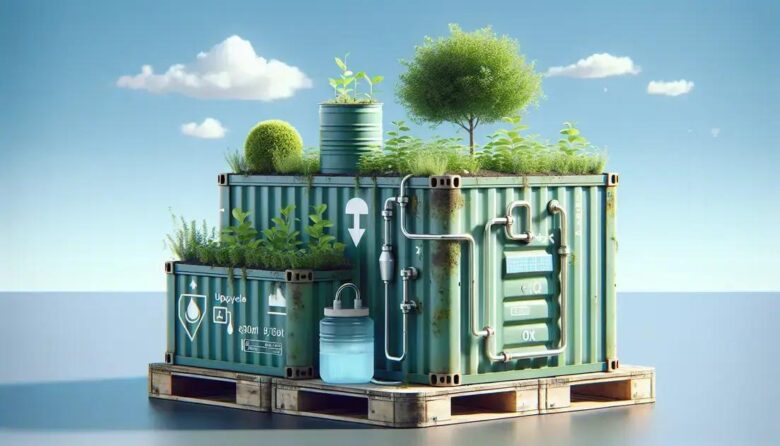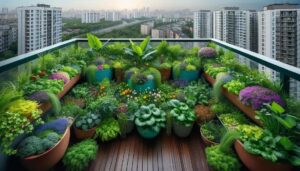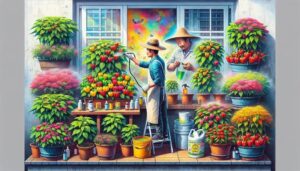Self-watering, upcycled container gardens efficiently conserve water and reduce waste by repurposing durable materials, offering a sustainable, cost-effective, and visually appealing method for cultivating a variety of plants, adaptable to any space with proper drainage and plant selection.
Have you ever thought about how a self-watering, upcycled container garden bed could change your gardening game? These innovative setups not only conserve water but also reduce waste by repurposing old materials. This article explores the magic behind these sustainable solutions.
how self-watering systems work
Self-watering systems are designed to provide plants with the perfect amount of moisture without constant manual watering. These systems typically consist of a water reservoir at the base of the container. Through capillary action or wicking, the water is drawn up to the plant roots as needed, ensuring they receive hydration even when you are busy or away.
The mechanics of self-watering systems are simple yet effective. The reservoir holds water beneath a false bottom or wicking pot filled with soil. As the soil dries out, it pulls water up from the reservoir maintaining consistent moisture levels, which can be ideal for a wide range of plant species.
A key advantage is efficiency. These systems reduce water wastage and ensure that plants aren’t over-watered, a common mistake among gardeners. Features like overflow holes prevent excessive accumulation, further guarding against potential waterlogging problems.
Consider using environmentally friendly materials for the containers to enhance the green aspect of your gardening. With a bit of creativity, almost any container can be transformed into a self-watering system. It’s a sustainable and practical solution that can revolutionize how you tend to your garden.
the benefits of using upcycled containers
Using upcycled containers for gardening offers a multitude of benefits. First, it contributes to sustainability by repurposing materials that might otherwise end up in landfills. This eco-friendly approach not only helps the environment but also reduces the need for new plastic production.
In addition to environmental advantages, upcycling containers can be cost-effective. It allows gardeners to save money by using readily available resources instead of purchasing new planters. Many common household items, such as buckets, milk crates, or even old bathtubs, can be transformed into functional garden beds.
Upcycled containers also add a sense of creativity to your garden. They provide an opportunity to express personal style and unique flair. By choosing different shapes, sizes, and colors, you can create an attractive and diverse garden landscape that stands out and engages visually.
Furthermore, with upcycled containers, you often have the advantage of customizability. You can modify them to suit specific needs, like adding drainage holes or liners, to ensure they are plant-friendly. This flexibility allows for a personalized gardening experience that can cater to the specific needs of the plants you wish to grow.
step-by-step guide to creating your own bed
Creating your own self-watering, upcycled container bed is an exciting and rewarding project. Start by choosing a container that fits your space and aesthetic. Look for materials at home that can be repurposed, like old buckets, barrels, or even drawers. Ensure your chosen container has enough depth to support plant roots.
Next, create a reservoir at the bottom of the container. This will hold water and enable consistent moisture. Use a plastic tray or shallow container with holes to allow water to wick up through the soil. Insert this at the base of your chosen container.
Drill overflow holes around the sides of the container, just above the water reservoir level. This prevents excess water accumulation and potential root rot.
Fill the container with a potting mix that is well-aerated and loose, ideal for wicking action. You can mix in organic compost to enrich the soil. Add a piece of pipe vertically through the soil down to the reservoir for easy watering later.
Finally, plant your seeds or seedlings in the prepared container. Choose plants that thrive in your climate and have similar light and water requirements. Once planted, water thoroughly through the pipe to activate the self-watering system.
choosing the right materials for upcycled gardens
Selecting the appropriate materials for upcycled gardens is important to ensure both functionality and visual appeal. Start by considering durability and climatic conditions. Materials like plastic buckets, wooden pallets, and metal tins can withstand various weather conditions, making them ideal for the outdoors.
Next, focus on the safety of the materials. Avoid items that have previously contained harmful chemicals. If using wood, choose untreated, natural wood to prevent any leached toxins from damaging your plants.
Size should play a role in your selection. Ensure the container is large enough to accommodate the growth of your plants while providing adequate soil space. This helps with the root system’s stability.
Consider customizability, as well. Materials that are easy to paint or modify can enhance the aesthetic of your garden. Customize them with bright colors or patterns to match your personal style and create a vibrant gardening space.
Finally, aim for resourcefulness. Utilize what is readily available to you, reducing costs and supporting sustainability. Items like old bathtubs, barrels, and crates make fantastic eccentric planters while supporting environmental consciousness.
common mistakes and how to avoid them
When setting up a self-watering, upcycled garden bed, there are some common mistakes to watch out for. One frequent issue is overwatering. Although the system manages water levels, filling the reservoir too often can cause plant roots to drown. Avoid this by regularly checking the water level and only refilling when necessary.
Another mistake is using inappropriate materials. Containers that leak or degrade quickly are unsuitable. Choose durable materials that resist weathering and maintain integrity over time, such as sturdy plastic or untreated wood.
Improper drainage setup can also lead to complications. Ensure the container has adequate overflow holes to prevent excess water accumulation. This avoids waterlogging and root rot, which can harm plant health.
Incorrect soil mix is another common error. Use a well-aerated potting mix that supports wicking action and sufficient airflow. Avoid clay-heavy soils, which may compact and obstruct water movement.
Lastly, many gardeners overlook plant selection. Choose plants suited to your climate and the specific conditions of your setup. Consider those with similar water and light needs to promote uniform growth and health in your garden.
real-life success stories and tips
Many gardeners have found great success with self-watering, upcycled container beds. For instance, one avid gardener turned old wine barrels into productive vegetable beds, drastically reducing water usage while enjoying abundant yields across seasons.
Another DIY enthusiast repurposed metal bathtubs found at a flea market. These tubs now house a vibrant herb garden that thrives with minimal attention, showcasing how upcycling can blend functionality with aesthetic appeal.
A community garden project utilized discarded pallets to create tiered self-watering systems. This innovation maximized limited space and provided fresh produce for local residents, proving that sustainable gardening techniques can also address food accessibility challenges.
To achieve similar results, consider these tips: choose containers that complement your space, ensure adequate drainage, and select plants that align with your local climate. Incorporating different textures and heights can also add visual interest and enhance garden diversity.
Don’t forget to experiment. Mixing and matching materials leads to unique, personalized setups. Engage with local gardening communities for shared knowledge and inspiration, which can help you refine and improve your self-watering systems over time.
Conteúdo não disponível
FAQ – Common Questions About Self-Watering, Upcycled Container Gardens
How do self-watering systems work?
Self-watering systems use a water reservoir to deliver moisture to plants as needed, reducing the need for frequent watering.
What materials are best for upcycled garden containers?
Durable materials like plastic buckets, wooden pallets, and metal tins are ideal as they withstand weather and provide structural integrity.
Can I use any container for an upcycled garden?
Yes, many containers can be repurposed, but ensure they are safe, non-toxic, and have appropriate drainage to support plant health.
What are the common mistakes to avoid with self-watering gardens?
Avoid overwatering, using inappropriate materials, and failing to provide proper drainage, as these can hinder plant growth.
Why should I choose upcycled containers for gardening?
Upcycled containers are eco-friendly, cost-effective, and allow for personalization in your gardening space, reducing waste and expenses.
Can I grow any type of plant in a self-watering, upcycled garden?
You can grow a variety of plants, but it’s best to choose those that suit your climate and have similar water and light requirements.



